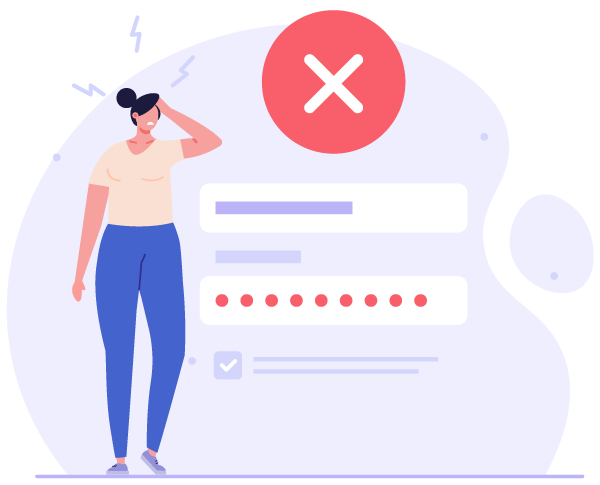Password Sharing
Account Sharing: What to Consider
In the age of streaming, social media, and having online accounts for just about everything, it’s important to know how to protect yourself and your information. Knowing when it’s safe and legal to share streaming accounts (and passwords) can be complicated. We all want to get the most from the services we pay for. And most of us want to play by the rules, even though perhaps only one in ten of us actually read the terms and conditions before we hit the “agree” button.
Every legitimate streamer has terms and conditions that may describe – and limit – the situations where sharing the account is considered acceptable. Netflix, for example, specifies in their terms of use that sharing your Netflix account with someone outside of your primary location is prohibited. (In 2022, Netflix launched a new policy in several countries – outside the U.S. – that offers account sharing with up to two people outside of their household for an additional fee.). The initial test for adding sub accounts began in Latin America and has since expanded to include New Zealand, Spain, Portugal, and Canada; however, it is unknown how this will impact sharers in other regions.
The paid account sharing policy has been expanded to include more than 100 countries in addition to those initially tested. It now impacts and applies to the US, UK, and Hong Kong, among others. Their website states “A Netflix account is meant to be shared by people living together in one household.” Any users who are not part of the household will need to create their own Netflix account or, in some countries, they can be added to the current account for a fee. It’s important to note that the latter option is not available for ad-supported plans. Reports of crackdowns by various streaming services for providing account access to users outside of the household are becoming more common – creating worry for both account owners and those they share with.
If you use a platform that offers easy access to more than one streaming service – like a cable service or Roku – that may also have its own terms and conditions. Those terms may be more restrictive than individual streamer terms since they provide you access to more than one streaming service through their platform.
You are responsible for checking your service provider’s terms to ensure proper use. Here are some things to consider:

Streaming Device and Credentials
Whether or not you are streaming according to your terms of service may depend on whose device and sign-in credentials you’re using.
- Is it a device that belongs to someone in your household?
- Are you using your own credentials (username or email, and password)?
- Is it someone else’s device, on which you’re using your own credentials?
TIP: When signing into a device outside of your household with your personal login credentials, always remember to sign out when you’re finished streaming or browsing.

Who is Using the Device?
It may matter who is using the device and with what credentials.
- Is the person using a device with your credentials a member of your household?
- Are you using the device and credentials of someone outside your household?
View more about providing account information to someone not in your household.

Streaming Location
Your location may matter when you are streaming. Streaming providers look at who is streaming by reviewing IP addresses, device IDs, and other information.
- Are you using your device and sign-in credentials away from your home. For example, at a friend’s house or a waiting room?
- Are you using your device and sign-in credentials at an address away from your primary home, such as a vacation home, or while away at university?
View more about what you can watch depending on where you are.
Situations Commonly Prohibited
Between service terms, devices, and location specifics, it’s difficult to describe every scenario that might violate your agreement with your streaming service provider or platform. Here are a few situations that are likely to be prohibited or discouraged.

Signing into the Device of Someone Not in Your Household
Signing into someone else’s device – or a public device! – with your account information is not good practice. You may or may not violate your terms of service when you stream your favorite movie at a friend’s house on their phone or tablet using your own credentials. However, leaving your friend’s device signed into your account independently if you forget to sign out is very likely a misuse on your part as the account holder and can leave you vulnerable to violations of your privacy.

Providing Account Information to Someone Not in Your Household
Sharing passwords and other account information is risky to your personal finances and well-being and can also put you at risk of violating the terms of your streaming service or platform. Giving your login credentials (username and password) to someone outside your household to enable them to stream using your accounts is simply not smart. It’s particularly important to explain and reinforce this with kids and young adults – they are less likely to realize that the person they share credentials with may then share them with other people.

Check Before You Do It
It is smart to check and understand account sharing terms for your service provider and your streaming services.
Some providers allow household members to stream from an account associated with their primary address while they are at a secondary address, such as a second home or vacation home, or away at school. Others may require a separate account or subscription for a separate physical address that is regularly used by members of your primary household.

What You See May Depend on Where You Are
When you’re away from your subscription’s home address, you may not have access to everything you can get from home. The rights that the owner grants to stream certain content may be limited to or exclude locations. What you can watch on YouTube TV, for example, is based on the home area associated with your account, enabling you to watch your local TV channels when you are home, and to watch the local channels in the location where you are traveling when you are away. This also can occur with sports content, where availability of a team’s contests may be “blacked out” in local areas.

The Bottom Line
We all value the ability to enjoy our favorite content at home and on-the-go, including downloaded content for offline viewing when reliable wi-fi and cellular connections aren’t available. While most terms of service follow common sense, they do vary in their specifics. Check the terms of service for your streamer or provider when in doubt. And don’t share your account credentials with others outside your household – it’s dangerous to your privacy and is a violation of the terms of service of most streamers and service providers. Password sharing with extra members not associated with your account opens you up to the potential for issues to occur, such as hackers obtaining your information. The moral of the story is: maintain your own account in order to keep your data and pocketbook safe. For additional information, check out our password sharing guide.

